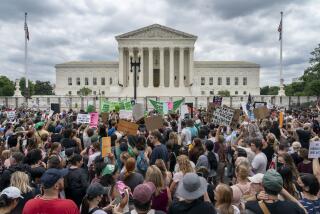Plastic surgery — it’s a guy thing too
- Share via
When John Tlapa looked in the mirror, his nose looked like he “could pick a door lock,” he said. It resembled “a hook with a point on it. It was pretty ugly.”
So two years ago, the San Diego-based screenwriter underwent rhinoplasty to improve his profile and fix a deviated septum that had plagued him for almost 40 years.
Tlapa, 54, is part of a trend that, in recent years, has seen increasing numbers of men seeking cosmetic surgery. In 2011, 9% of surgical and nonsurgical cosmetic procedures in the U.S. were conducted on men, according to the American Society for Aesthetic Plastic Surgery — a 121% increase since 1997.
While the number of cosmetic surgical procedures performed in the U.S. increased just 1% from 2010 to 2011, the number of males getting liposuction and eyelid surgeries is on the rise. More than 41,000 lipoplasty procedures and almost 23,000 eyelid surgeries were performed on men in 2011, increasing 14% and 6%, respectively.
Women in recent years have been trending toward minimally invasive cosmetic treatments such as Botox and Restalyne, but the fastest-growing cosmetic procedures for men are surgical. Liposuction tops the list of most common cosmetic surgical procedures performed on men, followed by rhinoplasty, eyelid surgery, male breast reduction andface-lifts.
“The taboo is lifting for men,” said Renato Saltz, a board-certified plastic surgeon in Park City, Utah, who is also vice president of the International Society of Aesthetic Plastic Surgery. “In the past few years, plastic surgery is everywhere. All those nip-and-tuck shows have brought plastic surgery to a common ground.”
As recently as a decade ago, “Patients would come in, have their surgery and hide for eight weeks. Nobody would talk about it,” Saltz said. “Now you have your surgery in the morning, and in the afternoon you’re talking to your friends. It’s become a much more acceptable commodity.”
A combination of medical, technological, economic and societal factors are contributing to the increase. Advances in anesthesia, in particular, have made many procedures available on an outpatient basis, negating the need for overnight hospital stays, reducing recovery times and allowing patients to get back to work more quickly. Just 18% of cosmetic surgeries were performed in hospitals last year, according to the ASAPS. The prevalence of makeover shows on television, and the wealth of information available over the Internet, has also contributed to plastic surgery’s acceptance.
But the largest driver of the trend is the simple fact that such a sizable portion of the U.S. population is aging. People ages 35 to 64 account for 71% of all cosmetic procedures in the U.S., the country with the largest number of cosmetic procedures performed, according to the 2011 International Study of Aesthetic/Cosmetic Surgery Procedures.
“There’s an increased trend of men over the last three or four years because of the economy,” said Dr. Babak Azizzadeh of Beverly Hills, a Harvard-trained plastic surgeon who specializes in cosmetic and reconstructive surgery of the face, eyes and nose. “It’s requiring that people look younger and more youthful. In the past, CEOs had to have a lot of gray hair. Now you see Mark Zuckerberg, these big entrepreneurs who are young. The reason eyelid and abdominal liposuction surgeries are so popular is because the eyelids and midsection are among the first parts of the body to show signs of age and among the most difficult to remedy without surgery,” Azizzadeh said.
That was the experience of Stephen, a lipoplasty patient from Orange County who asked that his last name not be used for privacy reasons.
“I couldn’t get rid of the fat,” Stephen said. “I tried diets. I walked five days a week and worked out three, but it just accumulated and I couldn’t get rid of it.”
For five years, Stephen was embarrassed to wear a T-shirt because it revealed his fatty abdomen and chest.
“I love breasts. Just not on myself,” said Stephen, who had thought about lipo for five years and finally bit the bullet in November when he had the time and money.
“There’s a huge pressure on men to continue looking youthful,” Azizzadeh said. “As a result, there’s pressure on them to seek either surgical or nonsurgical procedures to maintain their youth.”
More to Read
Sign up for Essential California
The most important California stories and recommendations in your inbox every morning.
You may occasionally receive promotional content from the Los Angeles Times.













